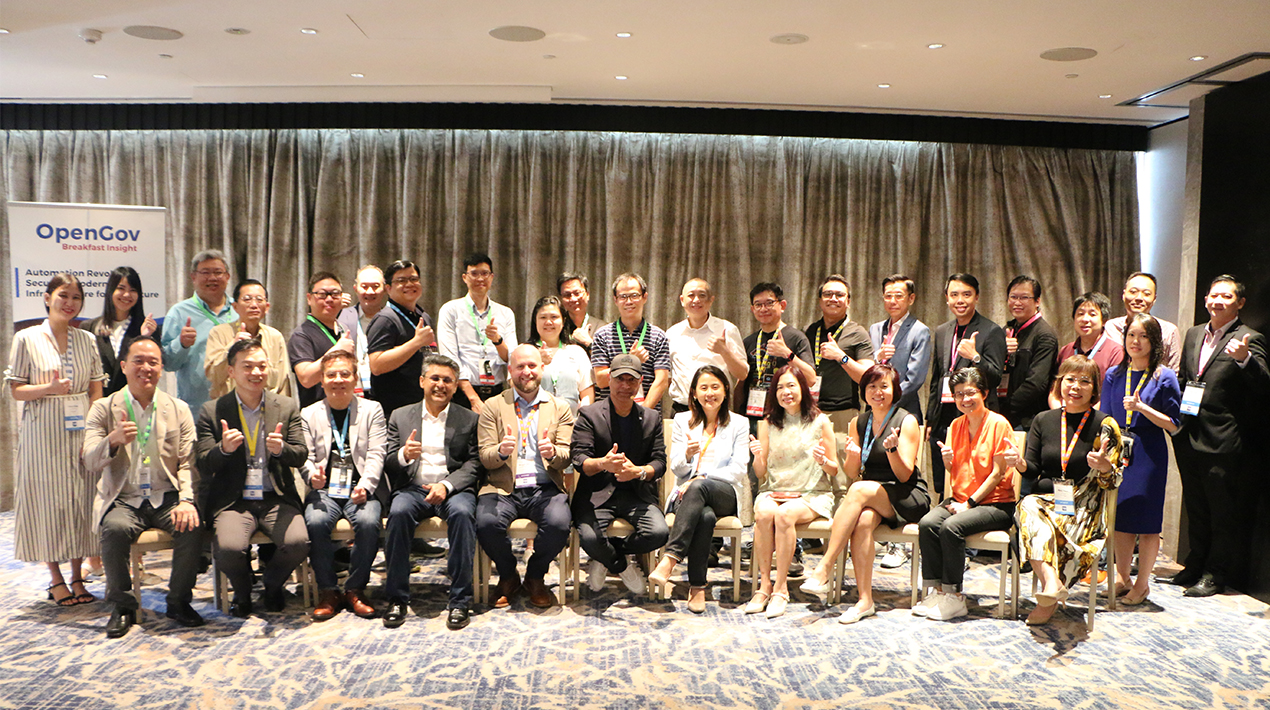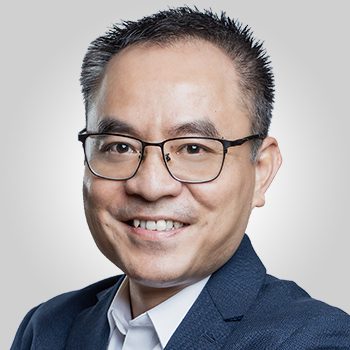
|
Getting your Trinity Audio player ready...
|
In the rapidly evolving digital landscape of today, organisations are increasingly turning to multi-cloud systems to take advantage of their flexibility, scalability, and cost-efficiency. However, this shift often brings about complex challenges in the realms of identity management and security.
To fully capitalise on the benefits of cloud computing while safeguarding their data and operations, businesses are now placing a high priority on certain objectives. These include automating security measures, mitigating risks, and effectively managing identities within the multi-cloud environment.
Enhancing security in multi-cloud systems heavily relies on automation. Automation empowers enterprises to promptly address threats, identify vulnerabilities, and maintain continuous monitoring of their cloud infrastructure. Automated security systems possess the capability to analyse extensive datasets, pinpointing trends and anomalies that may go unnoticed by human observers.
By taking a proactive approach, businesses can not only reduce downtime and financial risks but also significantly lower the chances of data breaches. Mitigating risks in a multi-cloud setting calls for the implementation of a comprehensive strategy. This encompasses establishing robust encryption, access control, and data loss prevention protocols across all cloud providers and applications.
Additionally, it is crucial to adopt a unified security framework that provides centralised visibility and control over the entire multi-cloud ecosystem within an organisation. Such an approach streamlines risk management by ensuring consistent policy enforcement, threat detection, and incident response procedures.
Identity management plays a vital role in multi-cloud security, especially when individuals like customers, partners, and employees access resources from various devices and locations. Identity and Access Management (IAM) assume a pivotal role in this context, enabling organisations to enforce precise access controls, ensuring that only authorised users can access resources.
Furthermore, IAM systems offer single sign-on (SSO) capabilities, which not only enhance security but also simplify the user experience by allowing users to access multiple resources with a single set of credentials.
As businesses increasingly embrace multi-cloud architectures to protect their data, assets, and reputation in today’s interconnected digital landscape, the adoption of automation and robust security practices becomes imperative.
A comprehensive cloud strategy that encompasses automated security measures, risk reduction strategies, and effective identity management in multi-cloud environments is foundational. Prioritising these elements empowers organisations to mitigate risks and fully harness the benefits of multi-cloud setups.
The OpenGov Breakfast Insight on 26 September 2023 convened Singapore’s leading technology experts at the Voco Orchard Singapore to discuss the latest developments in digital integration, cybersecurity, cloud computing, and data governance.
Opening Remarks

Mohit Sagar, the CEO and Editor-in-Chief of OpenGov Asia believes the role of IT automation in bolstering cybersecurity has never been more critical, particularly in the face of the growing sophistication of cyber threats.
He highlights the escalating intricacies of modern business infrastructures, compounded by the proliferation of remote work, mobile devices, and the Internet of Things (IoT). These developments have introduced vulnerabilities that traditional security approaches find challenging to combat.
Recent data breaches in Singapore, a global financial and tech hub, also underscore the urgency of robust security measures, highlighting the severe consequences of inadequate security practices in the face of evolving cyber threats.
In this context, Mohit underlines the revolutionary nature of Zero Trust Security, which eliminates the inherent trust traditionally placed in both internal and external entities. The importance of rigorous identity verification for users, devices and applications, emphasising the use of multiple-factor authentication as a core principle of this approach, is key.
“Continuous monitoring serves as a rapid anomaly detection mechanism, while micro-segmentation effectively constrains lateral network movement, ultimately minimising the impact of potential breaches,” he elaborates. “Here, automation assumes a critical role by swiftly analysing data, enforcing access controls, and providing real-time responses to incidents.”
According to Mohit, the adoption of automation is paramount for organisations looking to bolster their security measures. Automation accelerates processes, minimises errors, and empowers proactive threat detection and swift incident responses through real-time analysis.
Additionally, automated patch management guarantees timely updates, thereby reducing exposure to vulnerabilities, while orchestration optimises security tools and processes for efficient threat management
“To defend against modern cyber threats, organisations should employ a comprehensive approach that includes secure coding, infrastructure hardening and Zero Trust principles,” Mohit is convinced. “This strategy safeguards applications with secure coding, regular testing, and continuous monitoring.”
Infrastructure hardening serves to diminish attack surfaces while extending the principles of Zero Trust through stringent access controls and identity-based authentication, thereby fortifying the overall defence. This comprehensive approach integrates application-centric security, infrastructure hardening, and the Zero Trust Architecture, offering a multi-faceted defence against a wide range of threats.
A seamless identity-based framework begins with the establishment of robust Identity and Access Management (IAM) practices, which form the cornerstone of modern security. IAM effectively manages digital identities for users, devices, and applications, enabling precise control over resource access.
Mohit stresses the importance of access control policies that are structured around roles and responsibilities, emphasising their role in mitigating unauthorised access risks. He also underscores the significance of continuous monitoring of user activities, as it bolsters security by identifying unusual behaviour and potential breaches.
Additionally, he recommends that organisations prioritise the security of credentials for critical systems and data. This can be achieved through the implementation of robust password policies and user education. He also suggests that the adoption of password management tools can prove highly beneficial in this regard.
Elevated access management includes securing privileged accounts with strict controls, regular reviews, and just-in-time access. Data encryption safeguards sensitive information at rest and in transit, making unauthorised access ineffective. Continuous monitoring, with real-time alerts for strange behaviour, enables rapid response to possible breaches and improves security overall.
“In today’s evolving cybersecurity landscape, a comprehensive approach is key,” Mohit concludes. “From IT automation to Zero Trust Security and robust identity management, organisations must implement security measures to defend against modern cyber threats and safeguard critical systems and data.”
Welcome Address

Morgan Hite, the Area Vice President for Asia at HashiCorp, recognises the growing complexity of contemporary information technology infrastructure, underscoring the significance of safeguarding and preserving valuable assets for companies.
He agrees that advanced automation solutions can effectively address the intricate security requirements within hybrid and multi-cloud environments. These solutions offer valuable insights into secure asset management, threat detection, and incident response.
The ongoing shift towards cloud adoption is compelling organisations to transition from rigid to more agile infrastructure management, particularly within the public cloud domain. Consequently, IT operations teams are confronted with emerging hurdles.
These challenges include coping with sluggish manual workflows that can lead to errors and inefficiencies. Moreover, development teams may also find themselves burdened by intricate manual processes and less-than-optimal ticketing systems.
Moreover, the obstacles associated with implementing consistent policies not only hamper productivity but also elevate the risks an organisation must contend with. Consequently, having scalable and adaptable infrastructure automation becomes crucial in tackling these challenges effectively. Hence, many organisations opt for solutions that help them steer clear of such complexities.
Morgan explains that HashiCorp assists enterprises in resolving these issues by employing infrastructure as code principles for provisioning, compliance, and management across various domains, including public clouds, private data centres, and third-party services.
“Infrastructure automation plays a pivotal role in efficiently managing the progressively intricate cloud environments that organisations encounter,” he says. “This is a critical component in efforts to maintain security and protect critical assets in a frequently changing environment.”
In a dynamic cloud environment characterised by fluctuating demands, the capability to swiftly adapt and oversee resources emerges as a critical necessity. Automation assumes a pivotal role in guaranteeing efficient scalability, enabling organisations to effortlessly adjust their capacity as required without getting entangled in time-consuming manual processes.
Further, apart from scalability, operational efficiency stands out as another compelling rationale for the implementation of infrastructure automation. Automation empowers organisations to automate routine tasks like provisioning, scheduling, and resource management. Consequently, this not only lessens the burden of manual labour but also mitigates the potential for human errors.
Ultimately, it results in significant time savings when it comes to managing the intricacies of cloud environments.
“Security is another key factor that makes infrastructure automation very important. With automation, organisations can apply security policies consistently across their infrastructure,” Morgan elaborates. “This helps prevent vulnerable configurations and ensures compliance with required security standards. In a world full of security threats, automation helps keep cloud environments safe.”
Additionally, automation serves as a critical tool for enhancing infrastructure resilience. Its capacity to swiftly identify and respond to security incidents or infrastructure failures allows organisations to uphold the availability of their services. In this regard, automation proves invaluable in addressing the challenges that arise within the ever-changing landscape of a dynamic cloud environment.
Morgan strongly emphasises the fundamental importance of implementing infrastructure automation in today’s organisational landscape. He firmly believes that automation not only boosts productivity but also has the potential to curtail risk and optimise expenses, underlining its multifaceted value.
Automation has a positive impact on organisational productivity. By eliminating valuable time-consuming manual workflows associated with cloud infrastructure, organisations can experience significant time savings. That means less time is wasted on tasks like creating, managing and provisioning cloud infrastructure. As a result, the IT team and related staff can focus on more strategic and value-added tasks.
Automation further elevates the level of security by upholding rigorous operational consistency and ensuring compliance with established security policies. In this context, automation serves as a safeguard against the risk of security incidents stemming from human error or policy deviations. By automating security measures, organisations can execute them consistently and with high efficiency, providing a sense of confidence and peace of mind.
Additionally, automation enables organisations to pinpoint and curtail unnecessary or redundant utilisation of cloud resources, leading to significant cost savings. Organisations have the potential to realise substantial savings of up to 40% on their cloud infrastructure costs.
Such significant savings represent an opportunity to allocate budgets more efficiently towards other pressing needs. Consequently, investing in infrastructure automation can yield tangible economic benefits for organisations, freeing up resources for strategic initiatives and growth.
Morgan holds a firm conviction that infrastructure automation constitutes a strategic decision that delivers not only operational advantages but also risk mitigation and the intelligent and efficient allocation of budgets.
This proactive step has proven to have a positive and far-reaching impact on various aspects of an organisation’s operations and finances. In essence, automation acts as a multifaceted asset, enhancing security, reducing costs and streamlining operations for organisations operating in dynamic cloud environments.
Knowledge Insight

Mary Wee, Director of Cloud Services and Support at CPF Board, reflected on the devastating impact of COVID-19 on countless people. The pandemic took many by surprise with its sudden shifts in employment and lifestyle. Consequently, access to essentials such as food, medical services, and education unexpectedly became more challenging for many.
She underscored the paramount importance of preserving continuity and well-being amid the prevailing uncertainty. In a post-pandemic era marked by unprecedented challenges and unforeseen disruptions, maintaining financial stability has emerged as an essential pillar of resilience.
Mary strongly advocates having sufficient financial savings to effectively cope with unforeseen emergencies, particularly those triggered by events like the pandemic. This financial cushion not only imparts a sense of security but also equips individuals and families to surmount economic hardships that may arise unexpectedly. It underscores the pivotal role played by institutions like the Central Provident Fund (CPF) in extending vital financial services to the community.
CPF stands as a pivotal mechanism for helping individuals and families enhance their financial planning. This encompasses a spectrum of considerations, from long-term investments and retirement savings to health protection. By cultivating well-managed financial savings, individuals are better poised to confront challenging circumstances such as a pandemic with a greater sense of readiness and resilience.
The CPF, in this context, serves as a valuable tool in fortifying financial security and enabling individuals to navigate the uncertainties of the future with greater confidence.
Mary also underscored the paramount importance of effectively safeguarding client data, particularly in the context of social enterprises. In an age where data serves as a linchpin for informed decision-making and enhanced client services, the preservation of data security and integrity emerges as a foremost concern.
CPF frequently handles the personal and sensitive information of their clients, including financial, medical and various other personal details. Consequently, they bear a substantial responsibility to shield this data from cyber threats and potential misuse.
The loss of data or a security breach can wield far-reaching consequences, impacting not only client trust but also the seamless functioning of an organisation. It underscores the imperative of unwavering diligence in preserving data security and ensuring the highest standards of data protection to safeguard both clients and the organisation itself.
“In an age where services and operations are increasingly tied to cloud technology, security cannot be ignored,” says Mary. “As such, upholding cloud infrastructure cybersecurity is our top goal since it boosts client satisfaction through quality support.”
When customers entrust their vital data and information to an organisation, they hold the expectation that this data will be handled and stored with the highest level of security. This is not merely a matter of practicality; it is a profound issue of trust.
Mary understands that when customers have the assurance that their data is securely managed within the CPF Board’s cloud infrastructure, their satisfaction with the service provided is assured.
Robust security forms the bedrock of customer trust, and this trust is unequivocally reflected in the quality of service delivered. It’s a symbiotic relationship where security breeds trust, and trust, in turn, elevates the calibre of service provided.
The CPF Board’s commitment to cybersecurity extends beyond the technical aspects; it focuses on instilling a sense of safety and confidence in customers regarding the security of their data. This approach not only engenders customer satisfaction but also contributes to cementing the CPF Board’s reputation as an organisation that is both responsible and trustworthy in its stewardship of client data.
In the multi-cloud era, there has been a significant shift in the locus of control. Instead of relying on physical controls, the emphasis is now shifting to trusted identities, Mary explains. This means each entity must go through an authentication and authorisation process to gain access to a system or resource. By adopting this identity-based framework, they can effectively navigate the complexities of securing dynamic multi-cloud environments while ensuring higher levels of security.
Mary reaffirms the CPF Board’s unwavering dedication to the utmost protection of their clients’ data. They have put significant measures in place by implementing stringent security protocols, which include leveraging the latest in security technology and providing comprehensive training to employees in identifying and mitigating cyber threats.
In addition to these initiatives, they have established rigorous policies governing data management and storage, ensuring compliance with all relevant privacy regulations.
“It’s a holistic strategy where technical prowess combines with a commitment to customer trust, fostering a solid and reliable image for the organisation,” Mary concludes. “This multi-faceted approach underscores CPF’s dedication to the highest standards of data security and privacy, further cementing its reputation as a responsible custodian of client information.”
Closing Remarks

Binny Peh, Head of Partners & Alliances Singapore Public Sector, Amazon Web Services (AWS) expressed her appreciation for the attendees’ perceptive and insightful event as they came together to explore the transformative power of technology in the public sector.
“The discussions and interactions we’ve had reaffirm the pivotal role that technology plays in shaping the future of our societies, and more importantly, in improving the lives of our citizens,” she acknowledges.
Binny confirms that Amazon Web Services is deeply committed to driving innovation and enabling digital transformation for governments and organisations worldwide. “Our mission is to empower you to leverage the cloud to build more agile, efficient, and citizen-centric services. But it’s not just about technology; it’s about the partnerships and alliances we form, the collaborative spirit we nurture, and the shared vision we pursue together.”
She believes that the success they have achieved in the public sector is a collective effort. It’s the result of collaboration between government agencies, industry partners, and technology providers like AWS, “Your insights, your commitment to excellence, and your tireless efforts to push the boundaries of what’s possible are what make this transformation journey so exciting and impactful.”
Binny encouraged the participants to continue fostering innovation, build strong partnerships, and embrace the opportunities that lie ahead. She emphasised the importance of pushing boundaries and harnessing technology to tackle the most critical challenges in communities, ultimately working towards a brighter and more interconnected future for everyone.
“Thank you once again for your participation, your passion, and your dedication to the mission of OpenGov Asia. Together, we can achieve great things, and I look forward to our continued collaboration in shaping a better tomorrow,” Binny ends emphatically.
Li Wen Chi, Group Chief Technology Officer at Cloud Kinetics, expressed his appreciation to OpenGov Asia and all attendees for contributing to the event’s success, highlighting OpenGov Asia’s role as a facilitator of knowledge exchange, innovation and collaboration.
“OpenGov Asia has consistently created effective platforms for sharing ideas, stimulating discussion, building relations and driving change,” he acknowledges. “And this year has been no exception!”

As usual, Wen Chi confirms, the event featured insightful presentations, thought-provoking interactions and valuable networking opportunities, showcasing the dynamic evolution of digital transformation in Asia and the enthusiastic embrace of technology by governments, businesses, and individuals to catalyse positive change.
“One recurring theme of this event has been the pivotal role of technology in addressing our most urgent challenges. We’ve witnessed inspiring instances of technology’s potential for the common good. It’s evident that we’re not merely envisioning the future; we’re actively constructing it collectively,” Wen Chi reiterates.
Cloud Kinetics firmly believes that the cloud represents more than just a technological shift; it embodies a fundamental shift in our approach to business and society. And they are dedicated to leading this transformation, aiming to equip organisations with cutting-edge cloud solutions to navigate the intricacies of the digital era effectively, he confirms.
He encouraged the attendees to take the knowledge, insights, and connections acquired during the event and to further collaborate, share, learn from one another, and collectively strive for an inclusive, sustainable future driven by technology for the betterment of all.
“Remember that innovation knows no boundaries, and together, we can overcome any challenge that comes our way,” Wen Chi concludes, “The road ahead may be uncertain, but with the spirit of collaboration and innovation, we can navigate it successfully.”
In closing, Mohit extended his sincere gratitude to all the esteemed speakers, participants, and partners who graced the event with their presence and wisdom. Their expertise and unwavering commitment to innovation not only illuminated the discussions but charted a course for the future.
“Together, we have explored the limitless possibilities that emerge when governments, industry leaders, and technology providers join forces. We’ve delved into the transformative power of cloud computing,” Mohit appreciates.
It’s crucial, he adds, to acknowledge the transformative potential of AI, cybersecurity, and data analytics in the realm of public services. These technologies are pivotal in shaping the future of government operations and service delivery in several ways
Moreover, Mohit remains strongly convinced that in this era of unprecedented change, collaboration is not just a buzzword; it is the cornerstone of success, “It is through partnerships, alliances, and the exchange of ideas that we can unlock the full potential of technology and effectively navigate the intricate challenges that lie ahead.”
He urged the attendees to persist in the spirit of collaboration, encouraging them to forge new alliances, nurture existing partnerships, and remain open to the opportunities that technology continually unfolds.
“Let us always bear in mind that our collective mission is to enhance the well-being of citizens and stimulate comprehensive growth, “Mohit concludes, “We must keep the broader purpose of our endeavours at the fore and pave the way for a more sustainable and inclusive future for everyone.”
















